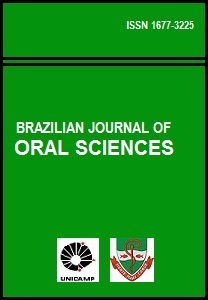Abstract
Salivary osmolality reflects the hydration status of individuals with cerebral palsy necessary for adequate unstimulated salivary flow rate. Aim: To investigate whether oral motor performance is determinant for the hydration status and the effect of a supplemental oral fluid supply on salivary osmolality. Methods: The sample consisted of 99 children with cerebral palsy aged 6 to 13 years old. In this study, children participated in 2-day evaluations: 1st day - baseline: saliva collection, caries experience and oral motor performance evaluations; and 2nd day: saliva collection after supplemental fluid supply. Prior to each evaluation, the participants were trained for saliva collection. Unstimulated whole saliva was collected using cotton roll at baseline, with the amount of fluid usually offered by caregivers, and 48 h after baseline, with as much as twice the normal daily fluid intake previously offered. Salivary osmolality was measured using a freezing point depression osmometer. Caries experience index for decayed, missed and filled teeth (DMFT) was evaluated. According to the Oral Motor Assessment Scale, the children were classified into subfunctional or functional groups. Chi-square, Student’s t test and Pearson’s correlation coefficient were used. Results: The subfunctional group presented a higher percentage of quadriplegic children (p<0.001), with significantly higher values for caries experience (p<0.001) and salivary osmolality (p<0.001), which did not diminish when supplemental fluid supply was offered, compared with the functional group (p=0.001). Conclusions: The effectiveness of oral motor performance plays an important role in the hydration status of children with cerebral palsy and those with worse oral motor performance may be at higher risk of oral diseases.
This work is licensed under a Creative Commons Attribution 4.0 International License.
Copyright (c) 2015 Maria Teresa Botti Rodrigues Santos, Maria Cristina Duarte Ferreira, Renata Oliveira Guaré, Oliver A. Nascimento, Jose R. Jardim
Downloads
Download data is not yet available.

